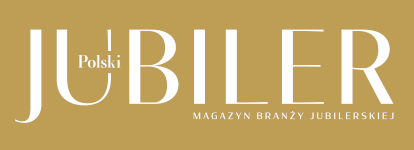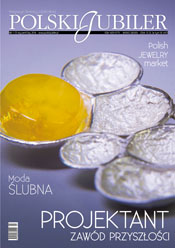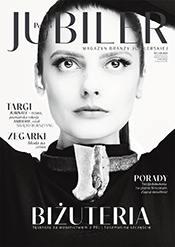Polish jewelry market is valued by experts at around 1.5 billion US dollars per year. The online jewelry market is a 250 million-dollar industry and still grows.
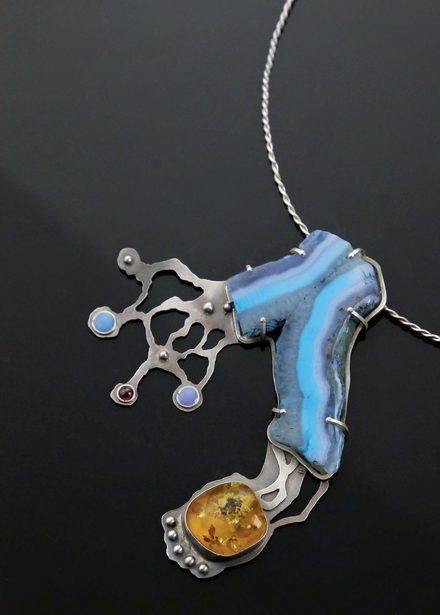
The jewelry market has been undergoing significant changes which prove that jewelry showroom customers have considerable interest in purchasing costly luxury items. Jewelry is sold both in specialty stores – private and corporate showrooms – and in gift shops, souvenir stores and on markets. Distributors and wholesalers are also active in the market. Gold jewelry is the bestseller in Poland. It is estimated that in 2015, gold jewelry constituted 55% of the market, with the silver jewelry in the second place. Poland is the third producer of silver in the world. It is also a major exporter of amber and a sole exporter of striped flint. The reason for the healthy growth in jewelry is the improving consumer mood related to the continuing economic growth in Poland. A large part of Poles feel that in 2015 their financial situation is sufficiently stable and improving. Due to the slight increase in personal income, spending on jewelry may also be somewhat higher, based on the higher quality of purchased products, the choice of gold instead of silver or higher interest in personalized jewellery. Poles spend their money to buy jewelry, which they regard not only as beautiful and valuable items or capital investment, but also as an investment in the contemporary art. More recently, the jewelry market has been undergoing significant changes which prove that jewelry showroom customers have considerable interest in purchasing costly luxury items.
Costume jewellery
Fast fashion continues to have a significant impact on costume jewellery. Consumers in Poland are increasingly seeking fashionable costume jewellery, with many high street retailers such as H&M and Zara continuing to increase the range available in their stores. While consumers can purchase economy costume jewellery from supermarkets, high-end costume jewellery is available in upmarket stores from polish designers. Costume jewellery thus spans a wide range of prices and brands. However, the range available is increasingly characterised by a rapid turnaround of original designs that are strongly trend-led. Colours and shapes tended to become more diverse towards the end of the review period, with consumers being keen to experiment with looks and styles in jewellery.
The biggest company
Company Apart sp. z o.o. maintained its lead in jewellery with a 20% value share in 2015. The company’s strengthening position mirrors the phenomenon of concentration in real jewellery. Apart is number one owing to well-known, prestigious and acceptable brands and common availability of its products offered in a network of nearly 200 showrooms in popular shopping centres located in medium-sized and large cities of Poland. The products offered by Apart feature up-to-date design and utilisation of precious metals and stones, which are sought by Polish consumers. Company Kruk S.A. maintained its lead in jewellery with almost 10% value share in 2015. Kruk offers jewellery in over 100 showrooms in Poland. Company YES remained the third player in jewellery in Poland in 2015 with a steady value share of 8%. The company benefits from its strong heritage, being one of the oldest and best-known jewellery manufacturers and retailers operating in Poland.
Design and Masterpieces of the Goldsmith’s Art
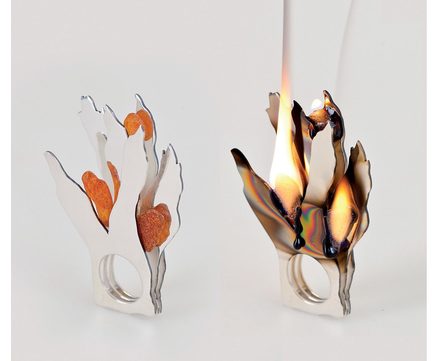
Jewelry purchases are not made only “at a jeweler’s.” The KPMG research shows that in Poland, the majority of luxury goods buyers choose showrooms which sell only the single-brand products. In the next group, 39% are the customers who frequent the department stores where they have a greater selection of different brand products under one roof. Equally popular are websites dedicated to luxury shopping. In Poland, customers are increasingly likely to buy jewelry at art galleries where they can find jewelry made by the best Polish jewelry designers in one place. Consumers have become more discerning and want the jewelry they purchase to be not only made of the most expensive metals in the world but also to represent miniature masterpieces of the goldsmith’s art. The increasingly financially comfortable Poles are eager to look for luxury items whose market value will multiply over time. A growing consumer interest in the jewelry offered in artisan jewelry galleries seems to be the proof. At artisan jewelry galleries, customers may find products made by both the Academy of Fine Arts professors, wellknown and respected goldsmith artists and young artists who are making their debut on the Polish art market. The most respected artists whose artistic jewelry is available in such galleries are Marcin Tymiński, Jacek Byczewski, Wojciech Rygało, Jarosław Westermark, Cezary Łutowicz, Mariusz Gliwiński, Paweł Kaczyński, Arkadiusz Wolski, Piotr Małysz and Andrzej Bielak. The works of these artists are known not only on the Polish art market but are also award-winning masterpieces of international goldsmith competitions. Almost every major city boasts galleries of artisan jewelry made by in-house artists. Among those, Galeria Otwarta in Sandomierz, Dubiel Gallery in Warsaw, Bożena Marka’s Gallery in Warsaw, Techne Gallery in Poznań, RA Gallery in Cracow, Nowińska Gallery in Warsaw, Gold & Silver Gallery in Sandomierz and Bielak Gallery in Cracow are particularly worth mentioning. Customers frequenting such galleries are interested in handmade silver jewelry, often containing amber and striped flint used in manufacturing. Customers are also willing to choose jewelry pieces made of gold and precious stones despite the fact that for an average Pole the price for gold rings made by a goldsmith artist is relatively high. In Poland, one may notice a need for individualized jewelry, as so far evidenced by a great success of the Pandora jewelry in our market, which offered customers the opportunity to combine the jewelry pieces themselves, and the native Lilou brand jewelry. Both the economic crisis and the customers seeking genuine valuables led Poles to decide to also buy “antique” jewelry. Poland is experiencing the emergence of a secondary jewelry market due to the customer focus on jewelry. Customers increasingly choose purchasing jewelry at art auctions. The prices of the jewelry sold there reach over PLN 500,000. Investors are looking for art deco jewelry which may prove ideal capital investment. The constantly rising prices of precious metals and stones make the Poles want to invest their money in the precious old jewelry. Jewelry showrooms customers treat jewelry as an investment. A report published by KPMG shows that Poles are equally willing to invest their money in jewelry and in real estate. They also frequently spend money on works of art, which also speaks in favor of jewelry.
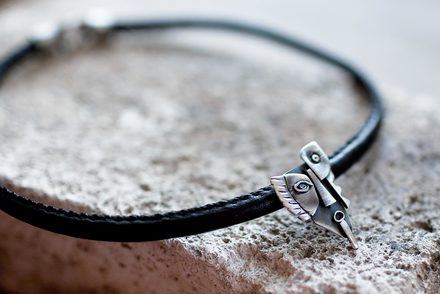
Jewelry Showroom Customers
Customers of jewelry showrooms and art galleries in Poland can be divided into two groups. On the one hand, they are young, well-paid women who tend to be residents of large cities. They look for jewelry that will allow them to manifest their style and emphasize their personality. Then there are affluent people over forty, who treat jewelry as an investment and also as an opportunity to emphasize their financial status. This group also includes a slowly increasing number of men who are interested in buying men’s jewelry. Most often, they choose the valuables bearing logos of well-known jewelry brands. The second group includes first of all the customers who are interested in buying wedding jewelry – the engagement and wedding rings. They do not spend a lot of money to buy jewelry – they do not spend more than PLN 1,000 on their purchases – but according to research, they constitute a stable group of customers of Polish jewelry showrooms. Polish jewelry is inherently associated with amber. Artists dealing with amber continuously offer beautiful specimens of jewelry to their customers. The design is becoming increasingly more attractive and works by Polish designers emphasize the individual appeal of amber. Designers discover the “Polish national treasure” themselves and thus for the customer as well. There is a growing group of customers with sophisticated tastes, consciously seeking and appreciating the individual forms of amber. However, we must remember that Poland is not only amber, but also striped flint. Jewelry made from striped flint wins a larger group of enthusiasts each year.
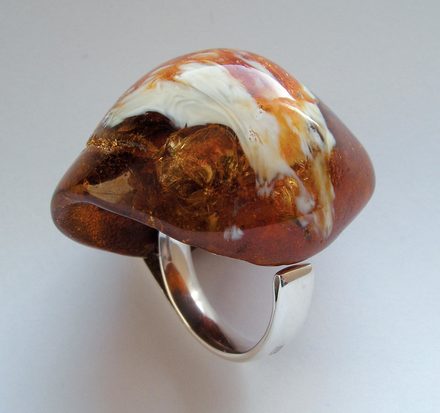

Silver jewelry
It is estimated that in 2015, silver jewelry constituted almost 35 per cent of the market. Silver’s unique physical properties, its radiance and malleability, its purity and untarnishable nature, have proved an irresistible combination for polish jewellery designers. The result has been the extraordinary variety of silver jewellery that exists today. A fusion of local artistry and urban chic, symbolism and expressiveness, and finely honed techniques culminates in extraordinary pieces. The intrinsic value of silver today has driven elite designers to both reinvent the classics and take gold design in starkly new directions, elevating its preciousness. In Poland are two centres for silver jewelry – Gdańsk and Warsaw. Tapping into this new trade in silver polish designers has created two digital platforms: trendymania.pl and olissimart.com. It is simply a place to discover the most beautiful silver jewellery being made, desired, given and worn today. Polish jewelry is mainly associated with amber and silver. It is not surprising that the ‘Polish national treasure’ wins the hearts of not only Polish women but also women looking for unique jewelry all over the world. Therefore, manufacturers and designers of amber jewelry are striving to surprise their customers and also offer them unusual forms of jewelry, designed to meet the requirements of discerning customers. Silver is inseparably associated with amber, and thanks to silver, artists creating in metal bring out the natural beauty of the Baltic treasure. In the studios of Polish masters, a unique silver jewelry is being created, ‘tailored’ to modern women. Some designers create their jewelry using gold. Designers also attempt to use white gold, which perfectly matches amber and does not break with the traditional perception of amber jewelry. Moreover, it is worth noting that the Polish market also offers amber jewelry combined with wood or even plastic. Wooden jewelry including amber is very popular – it is not only aligned with the latest environmental trends, but it also emphasizes the aesthetic qualities of amber. Amber is also freely combined with leather, silk, wood and cotton rope. Amber beads and necklaces are often comingled with semi-precious stones (turquoise), pearls, crystal, gilt silver, ebony and red reef coral. Amber has come into fashion; amber jewelry is often presented in fashion shows and celebrities are happy to wear it – perhaps because it is so universally applicable. The current clear trend is to move away from the previous homogeneous image of amber jewelry: a traditional, typically oval cabochon in a silver frame. Nowadays, a clear distinction is emerging between a commercial jewelry – by definition a lowcost made using a simple technology – and the artisan jewelry made by its creator: the jewelry that enjoys the best recognition and which must wait for its buyer.
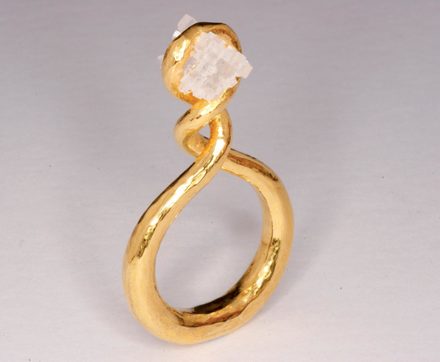
Contemporary jewellery
The new generation designers seem quite comfortable with purchasing pieces made using new technology. Indeed, some of the new and innovative sales methods opened up using CAD are particularly suited to this market. The use of online jewellery builders for making semi-bespoke jewellery seems to be doing well in this market. In Poland the number of designer-makers who are unafraid of CAD/CAM and 3D printing only seems to grow. Each year new faces seem to appear, each with interesting and resourceful ideas for how to use new technology to express design led jewelry. It seems that 3D printing is future polish jewelry.

